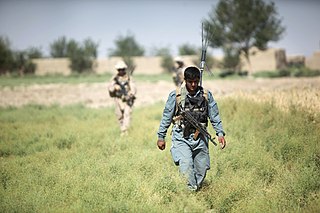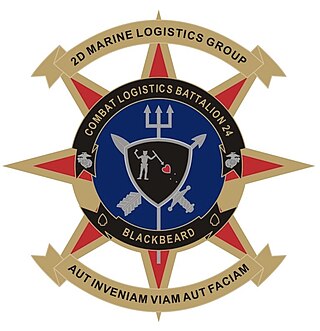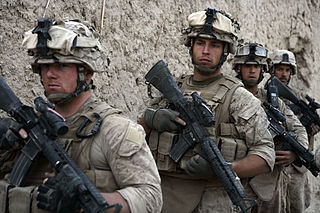Related Research Articles

The Taliban, which also refers to itself by its state name, the Islamic Emirate of Afghanistan, is a Deobandi Islamic fundamentalist and Pashtun nationalist militant political movement in Afghanistan. It ruled approximately three-quarters of the country from 1996 to 2001, before being overthrown following the American invasion. It recaptured Kabul on 15 August 2021 following the departure of most coalition forces, after nearly 20 years of insurgency, and currently controls all of the country. However, its government is not recognized by any country. The Taliban government has been criticized for restricting human rights in Afghanistan, including the right of women and girls to work and to have an education.

Zalmay Mamozy Khalilzad is an American diplomat and foreign policy expert. Khalilzad was U.S. Special Representative for Afghanistan Reconciliation from September 2018 to October 2021. Khailzad was appointed by President George W. Bush to serve as United States Ambassador to the United Nations, serving in the role from 2007 to 2009. Khalilzad was the highest ranking Muslim-American in government at the time he left the position. Prior to this, Khalilzad served in the Bush administration as Ambassador to Afghanistan from 2004 to 2005 and Ambassador to Iraq from 2005 to 2007.

Shortly after the September 11 attacks, the United States declared the beginning of the Global War on Terrorism and subsequently led a multinational invasion of Taliban-ruled Afghanistan. The stated goal was to dismantle al-Qaeda, which had executed the attacks under the leadership of Osama bin Laden, and to deny Islamist militants a safe base of operations in Afghanistan by toppling the Taliban government. The United Kingdom was a key ally of the United States, offering support for military action from the start of the invasion preparations. The American military presence in Afghanistan greatly bolstered the Northern Alliance, which had been locked in a losing fight with the Taliban during the Afghan Civil War. Prior to the beginning of the United States' war effort, the Taliban had seized around 85% of Afghanistan's territory as well as the capital city of Kabul, effectively confining the Northern Alliance to Badakhshan Province and smaller surrounding areas. The American-led invasion in October 2001 marked the first phase of what would become the 20-year-long War in Afghanistan.
Sher Mohammed Akhundzada is a tribal leader who was the Governor of Helmand in Afghanistan from 2001 to 2005.

The Battle of Tora Bora was a military engagement that took place in the cave complex of Tora Bora, eastern Afghanistan, from November 30 – December 17, 2001, during the final stages of the United States invasion of Afghanistan. It was launched by the United States and its allies with the objective to capture or kill Osama bin Laden, the founder and leader of the militant organization al-Qaeda. Al-Qaeda and bin Laden were suspected of being responsible for the September 11 attacks three months prior. Tora Bora is located in the Spīn Ghar mountain range near the Khyber Pass. The U.S. stated that al-Qaeda had its headquarters there and that it was bin Laden's location at the time.

Garmsir District is located in the southern part of Helmand Province, Afghanistan. The district is large, but all the villages are along the Helmand River. The rest is a desert. The district capital, Garmsir, is located in the northwestern part of the district on the east bank of Helmand River.
Garmsir is the center of Garmsir District in Helmand Province, Afghanistan. It is situated on the eastern bank of the Helmand River on 31.1167°N 64.2000°E at 714 m altitude and 63 km southwest of Lashkargah. The major road at Garmsir is Route 605. The hospital is called Hazar Juft Comprehensive Health Clinic.

The siege of Sangin was a military engagement which occurred between June 2006 and April 2007, between Taliban insurgents and the British army during the war in Afghanistan. During the engagement, the district centre of Sangin District in Helmand Province was occupied by British forces and was completely surrounded by Taliban fighters. At one point fighting became intensive, causing General David J. Richards, the NATO commander in Afghanistan, to declare that Helmand province had seen the fiercest fighting involving British troops since the Korean War. The siege became emblematic of the difficulty of the mission being carried out by British soldiers in Afghanistan, who nicknamed it "Sangingrad".

Combat Logistics Battalion 24 (CLB-24) is a logistics battalion of the United States Marine Corps. They are part of Combat Logistics Regiment 2, 2nd Marine Logistics Group. The unit is based out of the Marine Corps Base Camp Lejeune, North Carolina and is in direct support of the 24th Marine Expeditionary Unit.

The War in Afghanistan was an armed conflict from 2001 to 2021. It began when an international military coalition led by the United States launched an invasion of Afghanistan, toppling the Taliban-ruled Islamic Emirate and establishing the internationally recognized Islamic Republic three years later. The conflict ultimately ended with the 2021 Taliban offensive, which overthrew the Islamic Republic, and re-established the Islamic Emirate. It was the longest war in the military history of the United States, surpassing the length of the Vietnam War (1955–1975) by approximately 6 months.

The Helmand Provincial Reconstruction Team (HPRT) was established in September 2004. It was led by the US until 1 May 2006, when this responsibility was handed to the UK. HPRT ceased operations in Lashkar Gah on 27 December 2013.

The siege of Kunduz occurred during the 2001 United States invasion of Afghanistan. After the fall of Mazar-i-Sharif on 9 November, the focus of the Northern Alliance advance shifted towards the city of Kunduz, which was the last remaining Taliban stronghold in northern Afghanistan.

The Battle of Garmsir was a battle between United States Marines and other ISAF coalition forces, and Taliban insurgents in Garmsir, southern Afghanistan. It was part of the ongoing Helmand Province campaign and took place primarily between 2007 and 2011. By the end of December 2007, the situation on the ground had reached a stalemate, and a de facto border had been established. In order to break this stalemate Operation Asada Wosa was undertaken 1st Battalion, 6th Marines, the battalion landing team for the 24th MEU along with elements from 2nd Reconnaissance Bn started their combat operations with an attack on the Taliban-held town of Garmsir on 28 April. The operation was carried out in conjunction with British troops of the 16 Air Assault Brigade. Taliban forces withdrew from the town as a result of the assault and took up a position further south.
Mullah Mohammad Nasim Akhundzada was a mujahideen commander and Pashtun warlord who operated in Helmand Province, Afghanistan during the 1980s. Based out of Musa Qala in northern Helmand, Nasim was from the Alizai tribe. He issued a fatwa legalizing poppy cultivation in 1981. During the 1980s he gradually consolidated power over most of Helmand, eliminating other mujahideen factions. He was assassinated in March 1990 in Pakistan. His nephew Sher Mohammad Akhundzada was the governor of Helmand until 2005 and is an important Afghan politician.

Ali Hatem Abd al-Razzaq Ali al-Suleiman al-Assafi al-Dulaimi is an Iraqi Sunni tribal leader (sheikh). He is the sheikh of the Dulaim tribe, in Al Anbar Governorate.

Bahrāmcha is the center of Dishu District in the southern part of Helmand Province, Afghanistan.
This article summarizes the history of the War in Afghanistan (2001–2021).
On 1 July 2002 in Uruzgan Province, Afghanistan, the United States Air Force carried out an airstrike on a wedding party in Uruzgan Province, Afghanistan. An AC130 attack plane and a B-52 bomber mistook the traditional nighttime wedding celebration as a gathering of Taliban. Weapons are often shot at weddings, and thus the presence of weapons and gunfire at a wedding is not unusual. The US planes thought they were being targeted by anti-aircraft fire and attacked. Four villages were attacked and 54 civilians were killed, with 50 more injured. The Afghan government backed up that it was a wedding, and that guests had fired bullets into the air in celebration. The attack is cited as one of many criminal negligence made by Coalition forces in the early days of the Afghan War, which increasingly drove more Afghans to fight for the Taliban. The killing of innocent family members demands severe revenge in the Pashtunwali tradition.

The American War in Afghanistan: A History is a nonfiction historical account of the United States war in Afghanistan between 2001 and 2020. It was written by Carter Malkasian and published in 2021 by Oxford University Press. In 2022 the author received the Lionel Gelber Prize for this book.
The following is an outline of the series of events that led up the War in Afghanistan (2001–2021).
References
- ↑ Ricks, Thomas E. (5 February 2007). "Officers With PhDs Advising War Effort". The Washington Post . ISSN 0190-8286 . Retrieved 23 September 2019.
- ↑ Malkasian, Carter (2013). War Comes to Garmser: Thirty Years of Conflict on the Afghan Frontier. Oxford University Press. p. xi. ISBN 978-0-19-997375-0.
- 1 2 Chandrasekaran, Rajiv (13 August 2011). "In Afghanistan's Garmser district, praise for a U.S. official's tireless work". Washington Post. ISSN 0190-8286 . Retrieved 23 September 2019.
- ↑ "Civilian political advisor speaks to MCCC class". www.army.mil. Retrieved 23 September 2019.
- ↑ Mason, M. Chris (22 March 2017). "War Comes to Garmser: Thirty years of conflict on the Afghan Frontier". Parameters. Retrieved 23 September 2019.
- ↑ "Reflections on Anbar". Modern War Institute . 5 September 2017. Retrieved 23 September 2019.
- ↑ Lamb, Christina (2 July 2021). "Chronicle of a Defeat Foretold". Foreign Affairs. ISSN 0015-7120 . Retrieved 6 July 2021.
- ↑ Note: The book was published on July 1, 2021, prior to the rapid gains, in August 2021, that Malkasian predicted that the Taliban would make in seizing control of large parts of the country in the wake of the withdrawal of American forces.
- ↑ Malkasian, Carter (1 July 2021). The American War in Afghanistan: A History. Oxford, Great Britain: Oxford University Press. pp. 5–7. ISBN 978-0197550779.